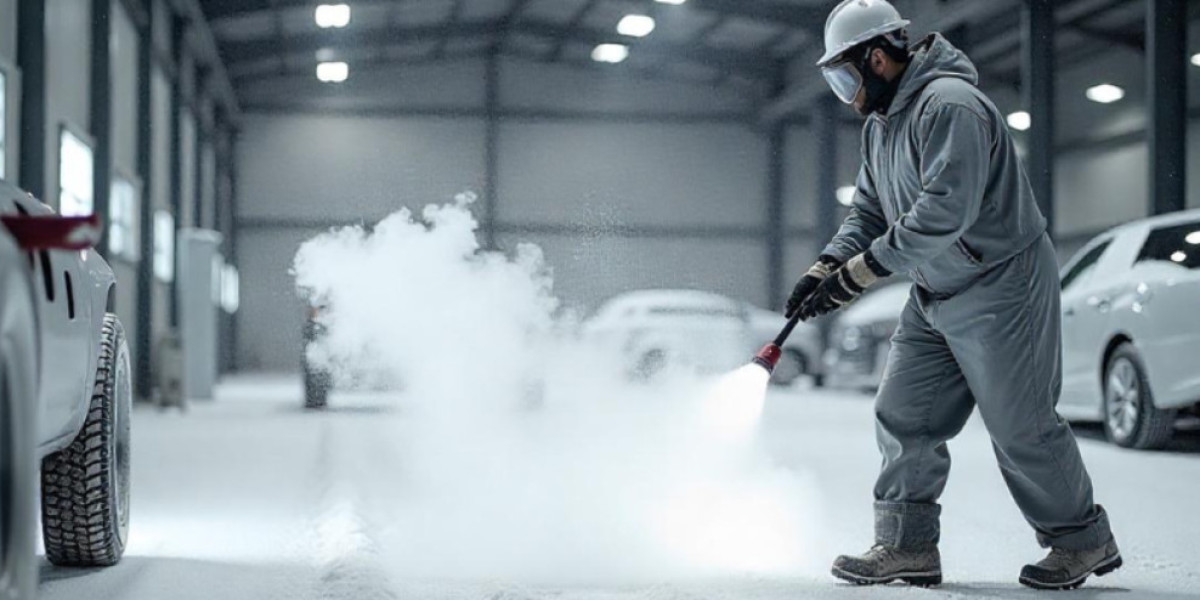What Is Dry Ice Blasting?
Dry ice blasting is a non-abrasive, eco-friendly cleaning method that uses CO₂ pellets (dry ice) accelerated at high speeds to clean surfaces. Unlike traditional abrasive blasting methods, dry ice sublimates upon contact, leaving no secondary waste. It’s a powerful, non-toxic, and environmentally responsible cleaning technology used across various industries.
Key Benefits of Dry Ice Blasting
1. Non-Abrasive Cleaning Without Surface Damage
One of the most compelling advantages of dry ice blasting is that it is non-abrasive. This means sensitive surfaces, such as those in electrical panels, molded components, or delicate machinery, can be cleaned without scratching, pitting, or etching.
2. Environmentally Friendly and Non-Toxic
Dry ice blasting uses carbon dioxide, a non-toxic, non-conductive, and non-flammable gas. It produces no hazardous chemicals, no wastewater, and no toxic residues, making it ideal for industries with strict environmental regulations, including food processing and pharmaceuticals.
3. Reduces Downtime with In-Place Cleaning
Unlike other methods that require disassembly, dry ice blasting allows for cleaning in place (CIP). This dramatically reduces production downtime, labor costs, and reassembly time. The ability to clean machinery while it’s still online boosts productivity and operational efficiency.
4. Minimizes Secondary Waste and Cleanup
Traditional blasting methods (e.g., sand, soda, or water) generate waste that must be collected and disposed of. In contrast, dry ice sublimates, turning directly from solid to gas, leaving behind only the dislodged contaminants. This eliminates post-cleaning waste and reduces cleaning costs.
5. Enhances Equipment Longevity
By removing contaminants like oil, grease, carbon buildup, and oxidation, dry ice blasting helps preserve equipment, prevent corrosion, and extend machinery lifespan. It maintains optimal function without degrading the underlying surfaces.
Applications of Dry Ice Blasting Across Industries
Automotive and Aerospace Industries
Dry ice blasting effectively removes paint, adhesives, sealants, grease, and carbon deposits from vehicle parts and aerospace components. It’s commonly used in engine cleaning, brake part degreasing, and tooling mold maintenance.
Food and Beverage Processing
In food production facilities, cleanliness is paramount. Dry ice blasting provides sanitary cleaning without moisture or chemicals, eliminating bacteria, yeast, mold, and contaminants from equipment, conveyor belts, ovens, and mixers. It complies with FDA, USDA, and EPA standards, making it safe for use in sensitive environments.
Printing and Packaging
Printing presses accumulate ink, grease, and paper dust that affect quality and function. Dry ice blasting cleans rollers, ink trays, and mechanical parts without disassembly, helping maintain precision performance and reduce printer downtime.
Restoration and Remediation
In fire and water damage restoration, dry ice blasting removes soot, smoke stains, and mildew from wood, concrete, and brick. It's also effective for mold remediation, stripping spores from surfaces without introducing moisture—a critical feature in mold control.
Power Generation and Utilities
Power plants and substations benefit from dry ice blasting’s non-conductive properties. It’s perfect for cleaning turbines, generators, electrical insulators, and circuit boards without the risk of short circuits. It improves operational efficiency while keeping systems online.
Manufacturing and Industrial Machinery
In manufacturing, contaminants like oil, resin, and metal shavings reduce equipment performance. Dry ice blasting cleans presses, extruders, molds, and conveyor systems, maintaining high-quality output with minimal machine wear.
Historic and Architectural Restoration
Delicate surfaces like brick, stone, and wood can be cleaned of graffiti, paint, or environmental staining using dry ice blasting without damaging the original material. It’s ideal for churches, monuments, and heritage sites.
Dry Ice Blasting vs. Traditional Cleaning Methods
| Feature | Dry Ice Blasting | Sand Blasting | Chemical Cleaning |
|---|---|---|---|
| Abrasive? | No | Yes | No |
| Produces Secondary Waste? | No | Yes | Yes |
| Moisture Involved? | No | No | Yes |
| Environmental Impact | Low | High | High |
| Suitable for Electronics? | Yes | No | No |
| Requires Disassembly? | No | Often | Often |
Safety Considerations
While dry ice blasting is safe and non-toxic, it does require trained operators and proper ventilation. As CO₂ gas displaces oxygen, enclosed areas must be well-ventilated to prevent asphyxiation risks. Operators must also wear protective gear, including gloves, goggles, and ear protection due to the high-decibel blasting process.
Cost Efficiency and ROI
Although the initial setup cost for dry ice blasting equipment may seem high, the return on investment is notable. Companies report reduced cleaning time, lower labor costs, and increased equipment uptime. When these benefits are compounded over time, the method proves to be cost-effective and scalable.
Choosing the Right Dry Ice Blasting Provider
When selecting a dry ice blasting service, consider:
Experience in your specific industry
Certifications and safety compliance
State-of-the-art equipment
Customized cleaning solutions
Client testimonials and proven case studies
A professional provider will offer a comprehensive evaluation of your needs and tailor their service to meet your operational goals and compliance standards.








